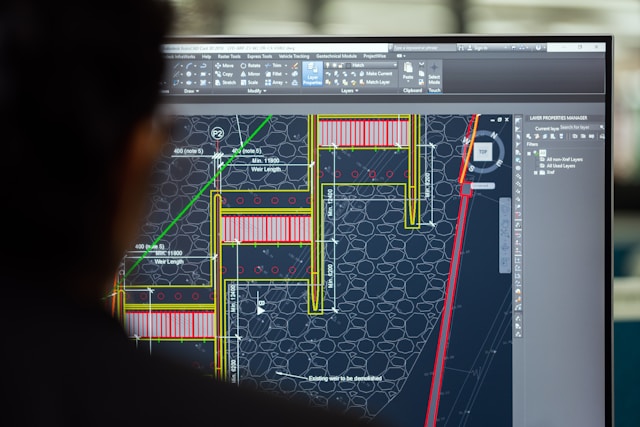
Web and mobile automation testing is one of the important and popular stages in the whole software application testing process. Almost every software organization uses test automation to make the software testing process more efficient and seamless. The test can be performed against various types of web browsers and operating systems.
Every organization has rules and regulations for performing the test automation process. However, collaborating with diverse teams for the testing process helps a lot to make your software application versatile and more efficient. However, the testing team followed some design patterns while using the automation tool for the testing process.
In this article, first, you will go through test automation. what are design patterns, then you will see what are the various design patterns that can be used to make the test automation process easy and more productive.
What is Test Automation?
Test automation is a software testing process to ensure the working of software’s features, functionality, user experience, reliability, etc. To perform a software testing process there are various types of professionals involved in the process. Stakeholders are a very important part of the test automation process. Also, it is necessary and advisable that all the test automation is accessible and usable by all the stakeholders. The various stakeholders included in the test automation are developers, testers, test managers, clients, etc.
Automation testing on the cloud is defined as the process of executing software tests using cloud-based automation testing tools and platforms. To find and fix any errors or bugs in your software application, you can run automated parallel testing on the cloud. This saves time and increases the efficiency of the testing process.
For instance, manual regression tests, which verify that nothing breaks whenever a developer submits a pull request, can require huge teams to put in dozens of hours of laborious effort. Instead, by linking your product with your preferred testing suite using an API, you may automate this effort. Automated testing focuses on executing the test cases in less time so that the software can be made seamless and user-friendly.
Benefits of Test Automation
The several benefits of using automation testing are as follows:
- It has more accuracy.
- It saves time and money as well.
- The testing scope gets increased.
- Quicker feedback for the testing team.
- Allows reusability of test scripts.
What are Design Patterns?
Design pattern in test automation is defined as reusable solutions in the software development process. Design patterns help the testing team to get a structured and systematic and systematic approach to address challenges while executing the software testing process using automation tools. This approach helps improve software development by improving the software quality, reliability, maintainability, scalability, etc.
Following established patterns, developers can leverage proven solutions, promote code reusability, enhance code organization, and facilitate easier modification and extension.
The test automation design patterns are not only limited to the software development process only. But it can also be applied in the realm of test automation. There are various test automation tool suites available in the market that face similar challenges, such as test code maintainability and handling complex test cases. Using some design patterns, the tester can improve the testing code usability and maintainability and, alternatively, enhance the test automation efficiency.
Importance of Design Patterns in Test Automation
The test automation design patterns have many advantages, and the testing team is advised to use the test automation design pattern to increase the testing and software quality. Here are some important pointers that reflect the importance of design patterns in test automation.
- Test automation design patterns have a long-term impact on test automation that increases testing efficiency and productivity. Also, they provide a structured and systematic foundation that helps manage changes and updates in the test suite in the future easily.
- It increases the test usability and readability.
- It decreases the chances of human error in the testing process when it uses an automation tool.
You can do automation testing in LambdaTest, which is an AI-powered test orchestration and execution platform that empowers web and mobile app testing with cross-browser, cross-platform, and real-device features. It facilitates testing by leveraging AI-driven orchestration and execution capabilities.
Various Design Patterns in Test Automation
Now, let us see what are the various design patterns in test automation that can be used by the software testing and development team.
Page Object Model
Page Object Model (POM) is the most popular and structured test automation design pattern considered in the test automation field for performing website or mobile application testing. When you are working in the Agile methodology environment, the testing team should always be prepared to apply any kind of changes in the software application code base. When there is a need to change, update, or add the automation code, the team should be prepared to modify it to keep it up and running.
Suppose you change an element in a website page, which is used to 20 test case files in the automation framework; then you need to update at 20 various places if the DOM design is according to the design pattern follow-ups. In this way, the POM ( page object model ) helps the test automation team to make the change in one place, and all the remaining 2 places will use this updated automation test code for the test execution process.
In the POM design pattern, the web pages are represented as a class. The web elements are defined using variables and methods. For example, if there is a login page class, there will be many locators. These locators will be like username, password, loginbtn, etc. When you use Selenium using the page object model, the test case uses the object of this Page class to call the various methods to perform actions on the web page.
Factory Pattern
Factor design pattern is one of the most used creational patterns as it provides the testing an option where the testing team can use the best way to create an object. In this design pattern, the term ‘factory’ is used to describe that there should be a class consisting of the factory method, and it will deal and manage with all creational stuff on a webpage.
This pattern has a superclass with several subclasses, and it returns one of the subclasses according to user input at the test class level. Stated differently, its purpose is to generate an object from any of the classes that can be used to extend a shared parent class or implement an interface. The class extending the parent class would be in charge of the instantiation logic, which conceals the sophisticated code at the test level. To call the relevant method carrying the business logic, we, as users, only need to construct an object of this type and utilize it in the test class.
Singleton Pattern
The singleton design pattern is one of the easy and simple design patterns used in test automation. This design pattern comes into use when the testing team wants to use the same object of a class throughout the automation framework. Singleton’s design pattern prevents the testing team from instantiating a class to a single instance.
Various steps can be followed by the testing team to create a singleton class which are as follows:
- First, you need to declare the test class ‘private’. This makes the class private, and no one can instantiate the class outside of it.
- Always remember to declare a static reference for the sued class.
- Do not forget to declare the static method having the return type as an object of the class. The class should check if the class is already instantiated or not at least once.
Facade Pattern
Facade design pattern is a very popular and important part of design pattern used in test automation. The reason for its popularity is the simple and user-friendly user interface of this design pattern. It helps to deal with and manipulate the test automation having complex test codes. A facade design pattern is an extension of the Page Object Model pattern.
For real-life example, when you visit a hotel or restaurant to eat food. You glance at the menu card or inquire with the server, we never know what cuisine the restaurant offers when ordering our favorite dish. We don’t care how the meal is actually made in the kitchen; all that matters to us is placing our order utilizing a waiter or menu card as the interface (facade). Simply put, a facade design pattern is used to hide the complexity of visiting the various pages and the way the user interacts with them. You can create a facade class and all the required business logic in the available method.
Fluent Page Object Pattern
The fluent page object pattern is the test automation framework in which OOP concepts are involved. As we know, the OOPs concept involves the practice of objects and classes to make the coding easy to read, understand, and easy to implement. It also improves the code reusability.
When we apply objects and classes in the test automation framework, the code becomes complex to handle, and it becomes critical to perform test automation. In this case, Fluent Interface and Method Chaining are used to minimize the code complexity handling.
Page Object Model is the most popular and widely used design pattern as it helps code readability and maintainability.
It can be more simplified and readable by using the Fluent Page Object Model as it uses method chaining. In this design pattern, every action method in the page class returns this to implement chaining methods for the business logic. This does not mean you cannot return other page class objects. You can either return this (same class) or another page class too.
Conclusion
The testing process helps a lot to make your software application versatile and more efficient. Test automation is a software testing process to ensure the working of software’s features, functionality, user experience, reliability, etc. Design pattern in test automation is defined as reusable solutions in the software development process. Test automation design patterns have a long-term impact on test automation that increases testing efficiency and productivity.
The various types of test automation design patterns are POM (Page Object Model), Factory Design Pattern, Singleton Design Pattern, etc. The Fluent Page Object Pattern is the test automation framework in which OOP concepts are involved. These are some of the popular and helpful design patterns that can be taken into account when you are performing test automation using automation tools.
To learn more about test automation and testing tools, you can visit the LambdaTest official website to learn more about such exciting testing topics. Happy Learning!




